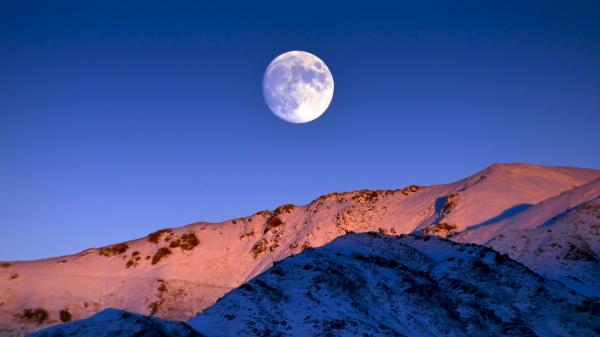February: Snow Moon
The February Full Moon is named after the snow on the ground. Some Native American tribes named this the Hungry Moon or the Bear Moon.

February's Full Moon is named after the snow covering the ground.
©iStockphoto.com/1255k
Snow Moon 2025
Feb 12, 2025 at 8:53 am
Snow Moon 2026
Feb 1, 2026 at 5:09 pm
Times for the Snow Moon vary by time zone. Times and dates are based on the local time in Columbus. Change location
Named After the Snow
The Snow Moon is the Full Moon in February, named after abundant snowfall in the Northern Hemisphere.
Some North American tribes named it the Hungry Moon due to the scarce food sources and hard hunting conditions during mid-winter, while others named it Bear Moon, referring to bear cubs being born this time of year. Celtic and Old English names for the February Full Moon are Storm Moon and Ice Moon.
Is the Moon upside-down in the other hemisphere?
Black Moon in February
About once every 19 years, February does not have a Full Moon. This is known as a Black Moon. Because of time zone differences, these Black Moons may not happen all over the world.
12 Full Moon Names
The Full Moon has been integral to tracking the change of months and seasons since ancient times.
Today, we use many of these ancient month names as Full Moon names, and many of them come from Colonial Americans adopting Native American names into their calendars.
Although the most commonly used Full Moon names are English interpretations of Native American names, some are also Celtic, Anglo-Saxon, medieval English, and Neo-Pagan.
When are the Full Moons this year?
Is February the Snowiest Month?
February is one of the snowiest months in the US, but December and January also get lots of snow.
On our climate pages, you can see which month is the coldest, warmest, wettest, and windiest in cities worldwide.